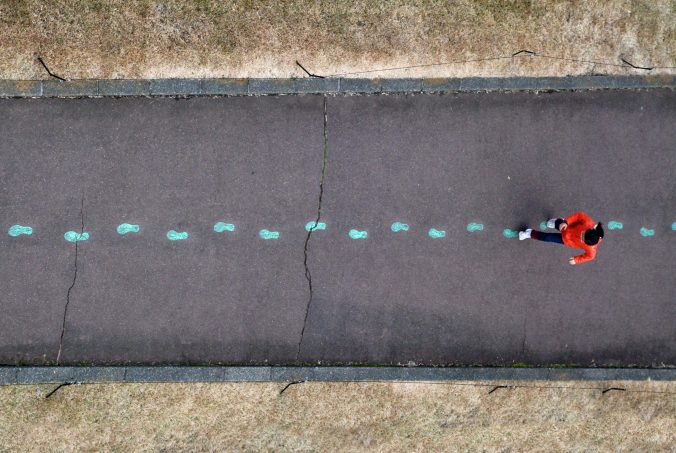Reflections on EDCI 515 and EDCI 568: A Culinary Analogy
An illustration of how the last three weeks have gone may be seen in reference to food. That is, for twelve class sessions we as students have been treated to two complete meals (with appetizer, main course, and dessert) each day. Each of the EDCI 515 and 568 menus has followed a particular theme, distinct from each other, and each menu consisted of a variety of dishes from its theme, from hot and spicy, to savoury, to sweet, to occasionally bland (in a good way). 🙂
Each day, we were treated and were asked to eat each meal, to go home to digest, and to prepare for the meal the next day by studying the next day’s recipes. At the end of each day we felt stuffed full of yummy food, perhaps wanting to let the flavours linger on our taste buds, but knowing that we had to be ready for the next day’s offerings.
By the end of the first week or so, we came to realize that we were really only supposed to sample the meals, not to eat them entirely every time. Our bodies could not possibly recover in time to eat two more complete meals again each day, so we learned to appreciate each meal for what it was, to write a review of the food, and to move on.
At the end, we were asked to reflect on how those meals contributed to our understanding of meal preparation and to look forward to how we might prepare our own meal. Would it be spicy? Savoury? Salty? Sweet? A mixture? Some already know what that meal will look like. Others have no idea, but are getting closer. Since each person’s meal will not be served for about 18 months, we have lots of time to prepare, but we are cautioned not to leave that menu item preparation until the last minute. It will take time to gather the ingredients, do the prep work of chopping, slicing and dicing, and to assemble the right utensils for the type of dish we are preparing. We look forward to the smorgasbord, and hope it is to your liking.
EDCI 515 and EDCI 568

photo used with permission – yes that’s me
The scientist in all of us likes to see positive results from our experiments. We like to put our theories into practice, to test our hypotheses and observe the effects. When it comes to education and education theories, it is no different. In the classroom a teacher may wonder, “If I try this activity, will students understand the concept better? Will it produce better result on assessments? Can I observe mastery of the skill?” and then test the theory, and track the results. If the results are not positive, the teacher may not do that activity again, or modify it to better address what hindered student achievement.
The difficulty with the scientific method is that it is not always appropriate for the type of questions being asked. If the question is “Which activity will allow student A to understand the concept better?” then the experiment and results look very different. Results may not apply to any other student, so no definitive conclusion may be made regarding the “right” activity a teacher might use.
How does this relate to me? I have my feet firmly planted in both camps. I often think of an activity, try it out in class, and decide whether it yielded the results I expected. The results further inform my use of that activity or approach. On the other hand (foot), I also guide students through the process of exploring their interests in a topic to find the connections to the course contents. One approach is not “better” than the other; they each have strengths and weaknesses, depending on what the question being asked is.
Perhaps, as we have seen in our look at different methodology, a mixed methods approach is appropriate for me. Or at the very minimum, using both methods independently, according to the situation. As I have noted before, with a background in psychology I am acutely aware that when dealing with humans and studies on human behaviour or thinking, achieving 1.0 correlation of data is impossible – unless it is biologically rooted, like whether humans can survive without blood. So the take-away is that even the most successful theories of education will apply to most (if that) of the population. It would be a disservice to our students for all teachers to use the same approach, regardless of what the research says. Unless that research on a particular approach to learning comes in at 1.0 correlation, it is not the answer for all. So as teacher-researcher, I must be aware that in a given time with a particular group of students, I aim to get the best out of each one, knowing that some methods will work better than others. At the same time, there will be factors out of my control, for example home life or misuse of drugs (especially in high school), that will prevent that student from engaging even if the methodology is perfect for them.
What I see moving forward is that in the pursuit of a Master’s of Education I will need to investigate research methodology more deeply first, then look to the one that best addresses the questions whose answers I am pursuing. At the moment I see qualitative study as the approach best suited to the question I am looking at right now. That is, “What role does school climate or connectedness have to play in students’ academic success or social engagement at school?”
EDCI 515
In looking at phenomenology as a research approach, I began to see my own research question framed by a phenomenological point of view. Perhaps, as I initially looked for research that produced causality, I was doing the “square peg, round hole” type of thinking; trying to push my research question into a quantitative framework that was not the right fit. As I read more and more about phenomenology, I came to understand that that was the square hole into which my square peg was fitting. However, even though methodologically this was a better fit, I am left to answer the question that my research poses: So what? Qualitative research yields results, but what do you do with that information? If hypothetically my research yields results that say that teacher-student relationships greatly contribute to a feeling of school connectedness, what is to be done with that information? That is, so what? If I decide to try to make my interactions with students better so they have an increased connection to the school, how important is that? By what measure do I consider what is “important”? Are grades important? Is attendance? Is participation? Is long-term attitude towards life-long learning? Yes, the results are informative, but again, so what? Am I researching for research’s sake? How does this inform my practice?
What may be necessary is a reframing of the question including a different demographic of subjects. Rather than looking at subjects who are in school, it may be better served to interview subjects who are in their 20s or 30s, asking them to reflect on their connectedness in high school and how that impacted their current lives. This keeps the qualitative nature of the research but tries to address the influence in the long term, outside of the direct high school experience itself.
EDCI 568
The central question that Jeff Hopkins and Trevor Mackenzie have looked at answering is, “How do we design learning around the student instead of the teacher?” For Jeff Hopkins the answer was, after trying with limited success within the system, to go outside of the system and to literally construct a school that addressed that question. For Trevor Mackenzie, the answer was to stay within the system and look at learning design within the confines of the structure that is in place. At the heart of both approaches is Inquiry-Based Learning, which gives students ownership over their process. While the concept of inquiry as methodological approach is not new (John Dewey, 1938), it has gained momentum as educators look to make learning more individualized. Given that I am a teacher in the public education system, radical changes such as Jeff Hopkins has made, cannot be made at my level; those are structural, at an administration, senior administration, or Ministry of Education level. What I can implement is at Trevor Mackenzie’s level: in my individual classroom.
As noted in the above section, like all approaches, it is not a one-size-fits-all methodology. It has its benefits, but when dealing with humans, it may work for many, but not all, or at least all the time. Given that, it is a tool to use when it suits the time and the students. For educators, it is vital to consider using this approach because it has clear benefits to student learning, and I will use this information to guide future projects in my classes.
The other major side of the course load included a focus on engaging with the digital world of education. One of the biggest take-aways from this focus was a heightened awareness of the rights and responsibilities of education online. Having taught the New Media 10 course, in hindsight I did not do my due diligence in preparing students (or myself) on FIPPA or BC’s Digital Framework as an introduction to the course. This is not limited to the New Media 10 course, as students and teachers need to know that any assignment or project that requires their presence online must keep those guidelines in mind.

photo used with (my) permission
Regarding that last point, in my blog submissions for these courses, after seeing the dangers of overstepping privacy concerns, I made decisions not to include images or video that might identify students or staff. As a result, the blog posts look quite sterile; devoid of personality. I could add creative commons images or video, but I still regard them as devoid of personality, or at least a personal touch. So the result is a “better safe than sorry” approach that, while cautious and better than heedless, is legitimately constrained. I leave the personal touch to wearing costumes. 🙂




Recent Comments